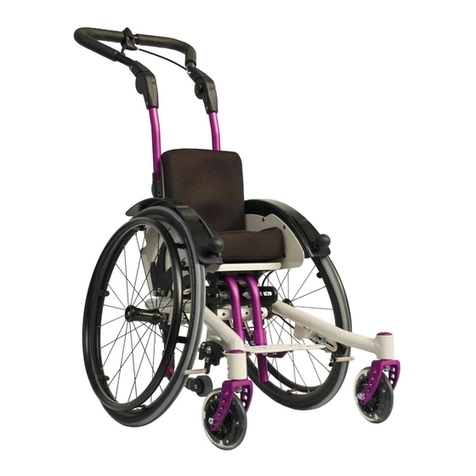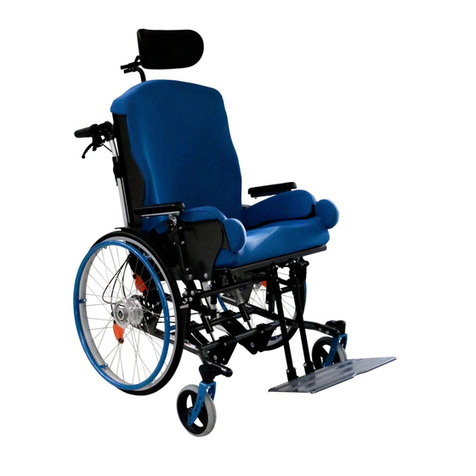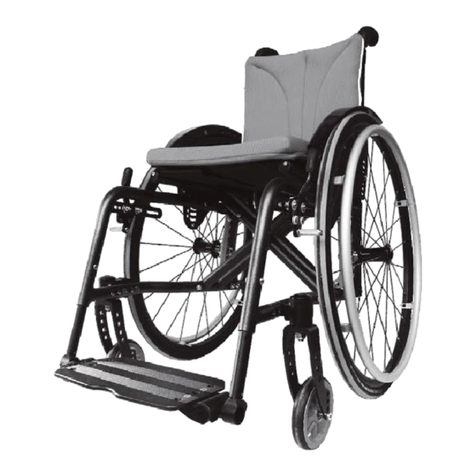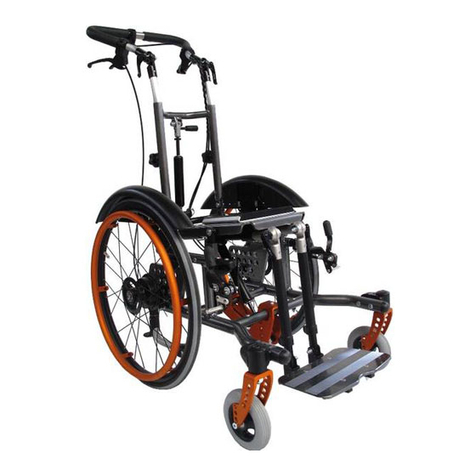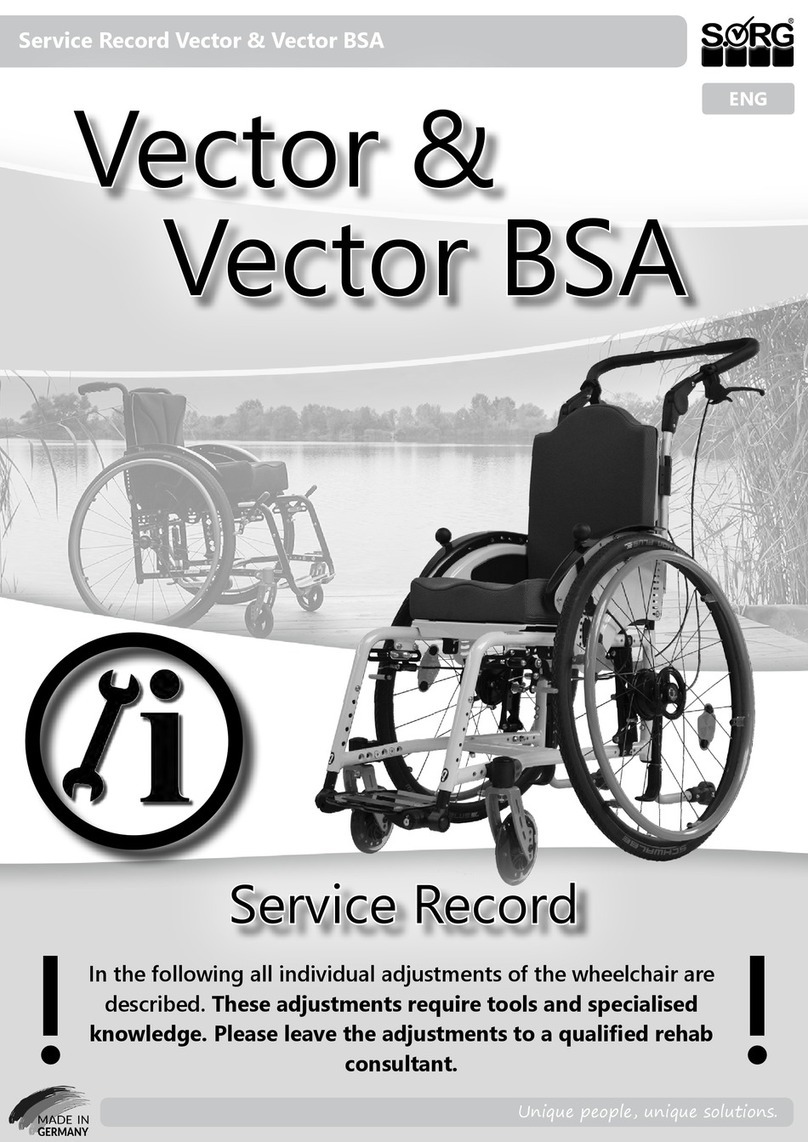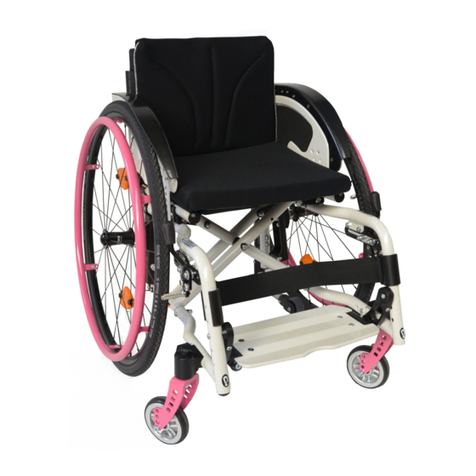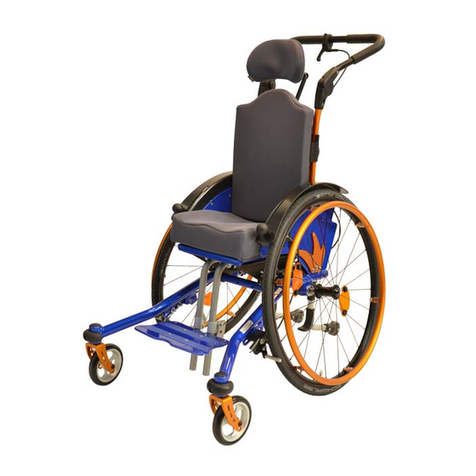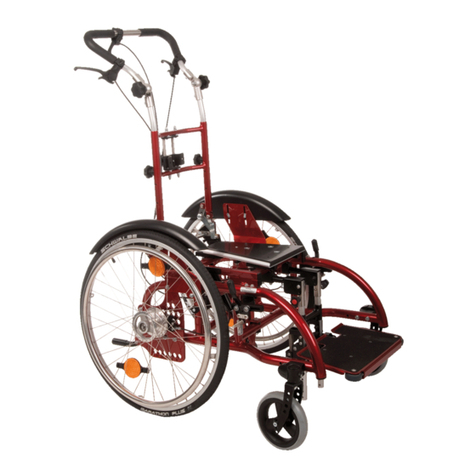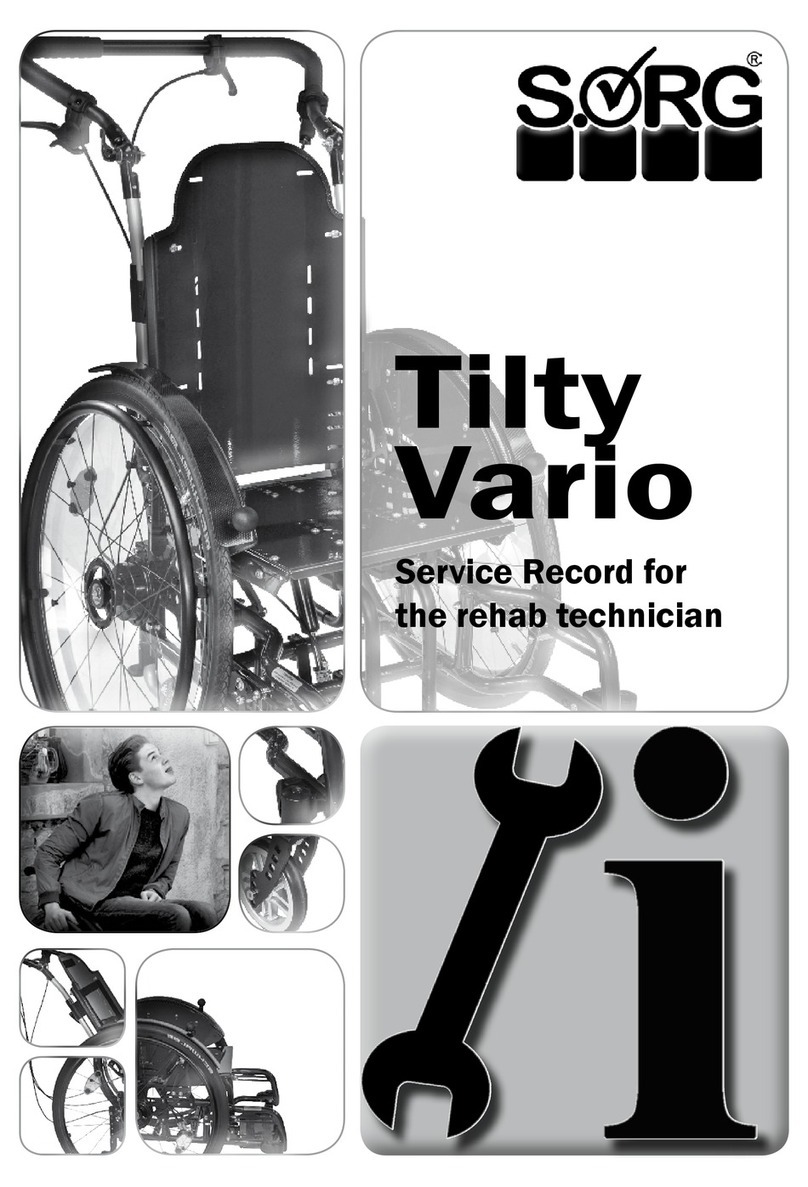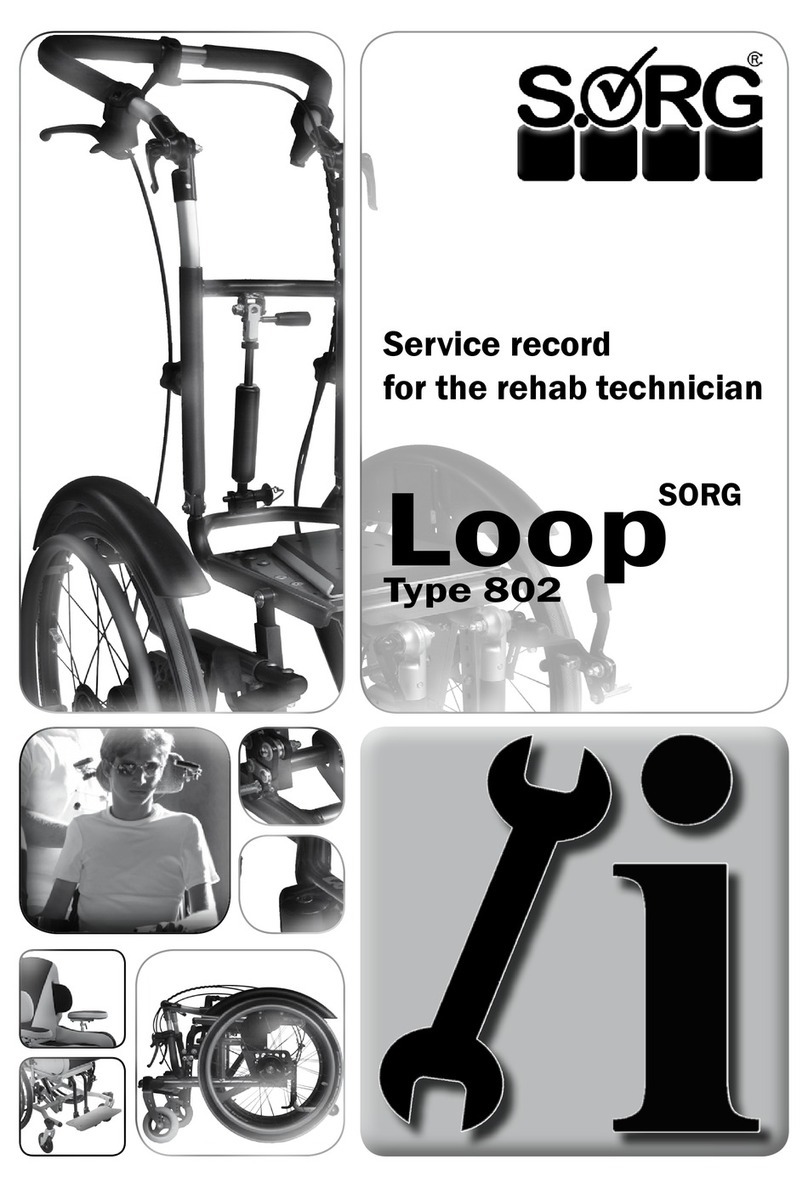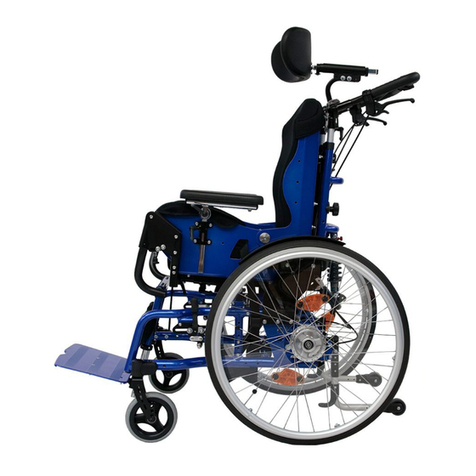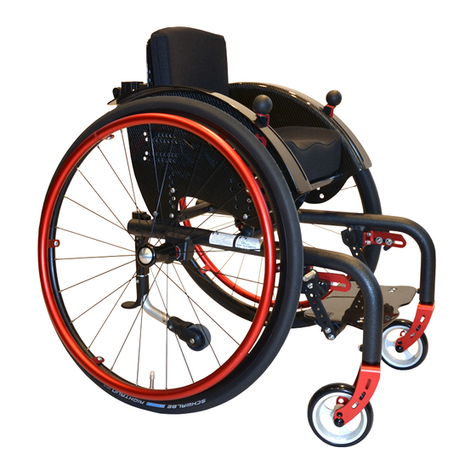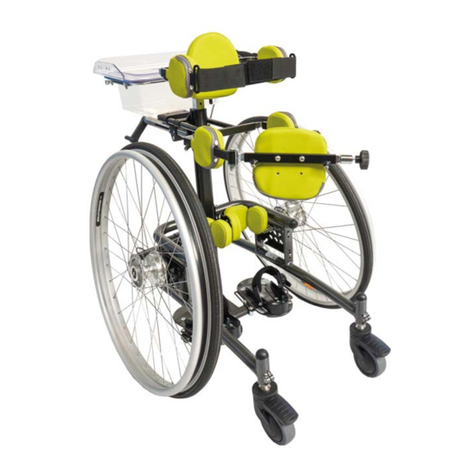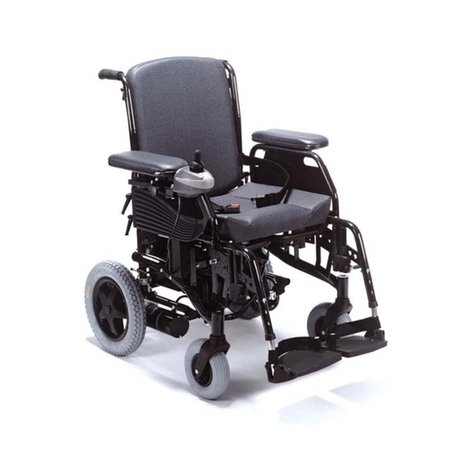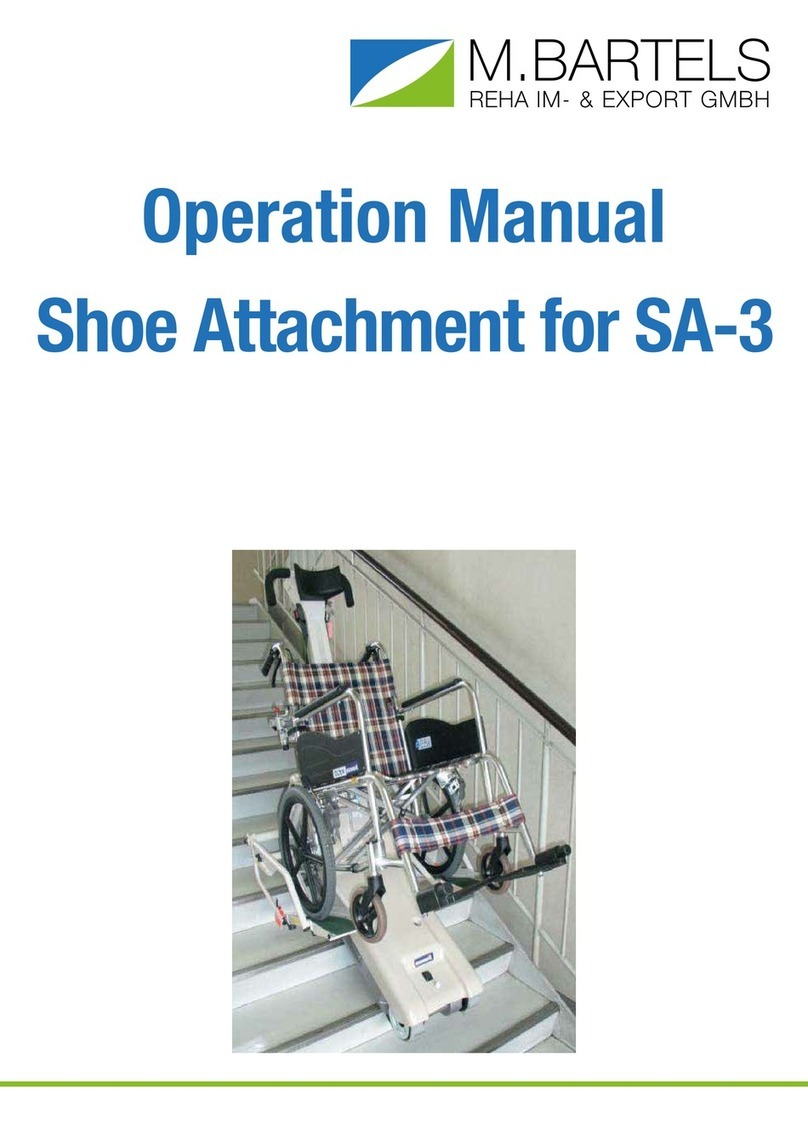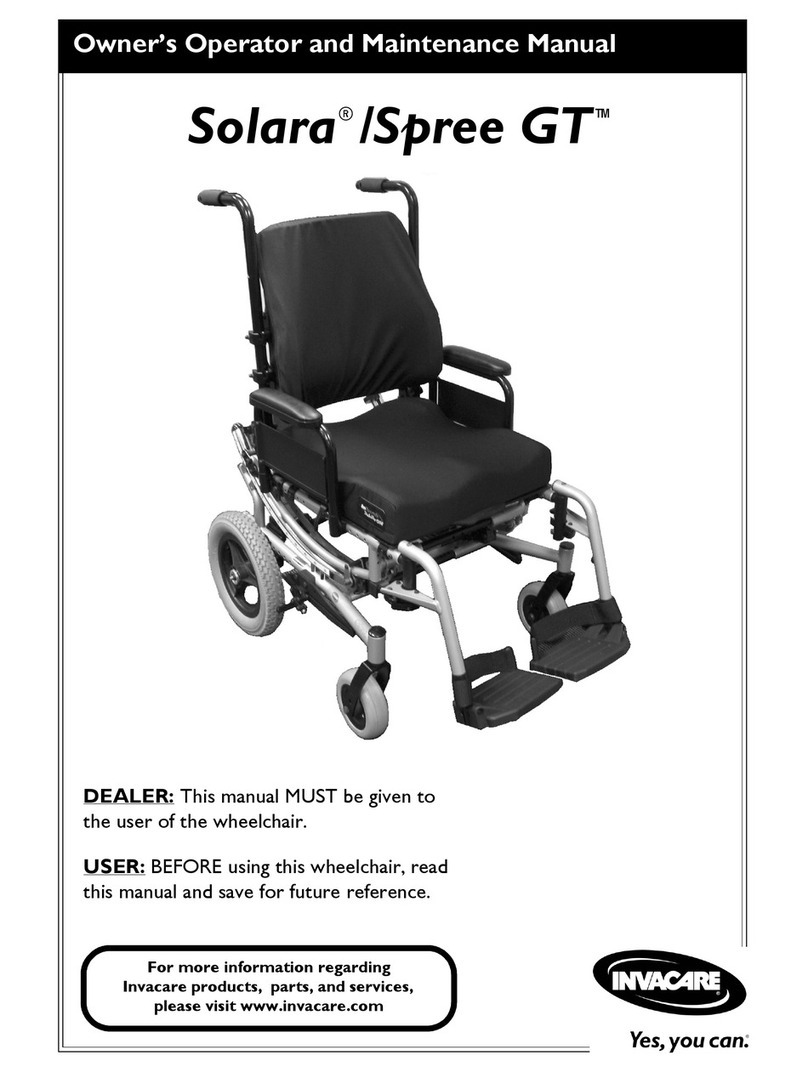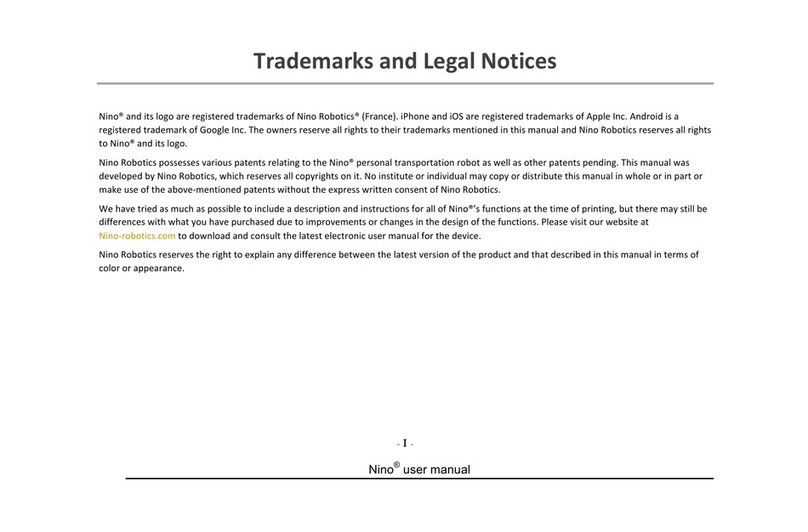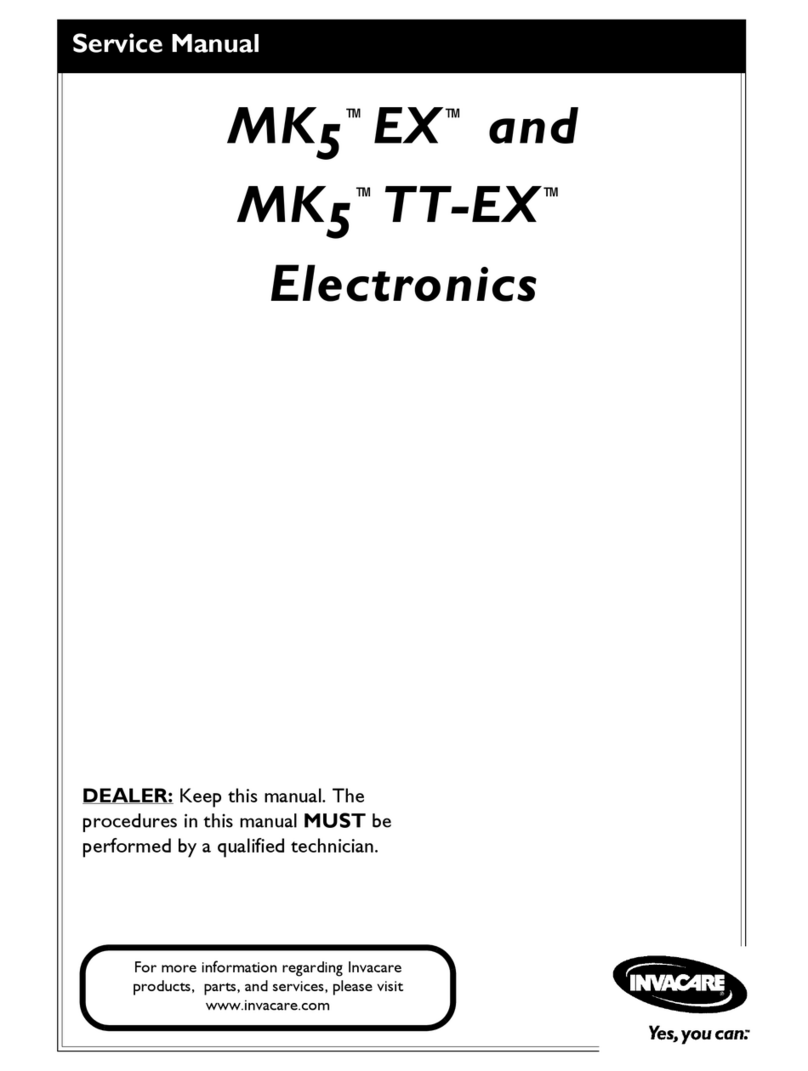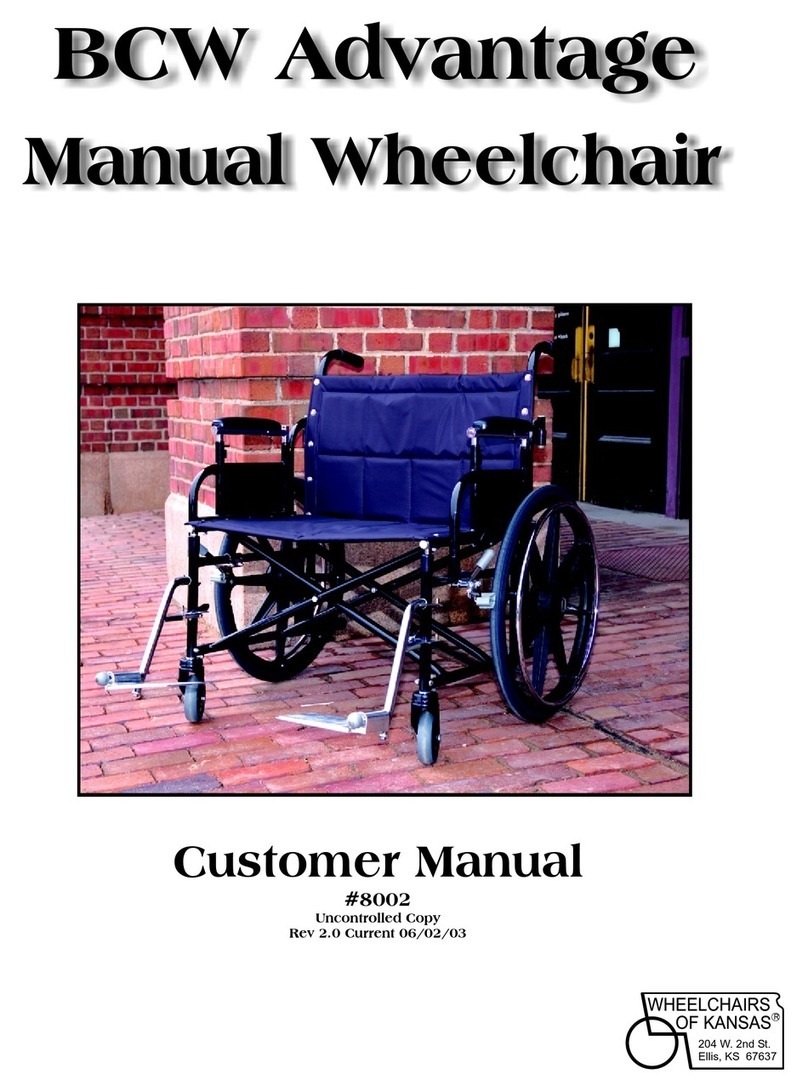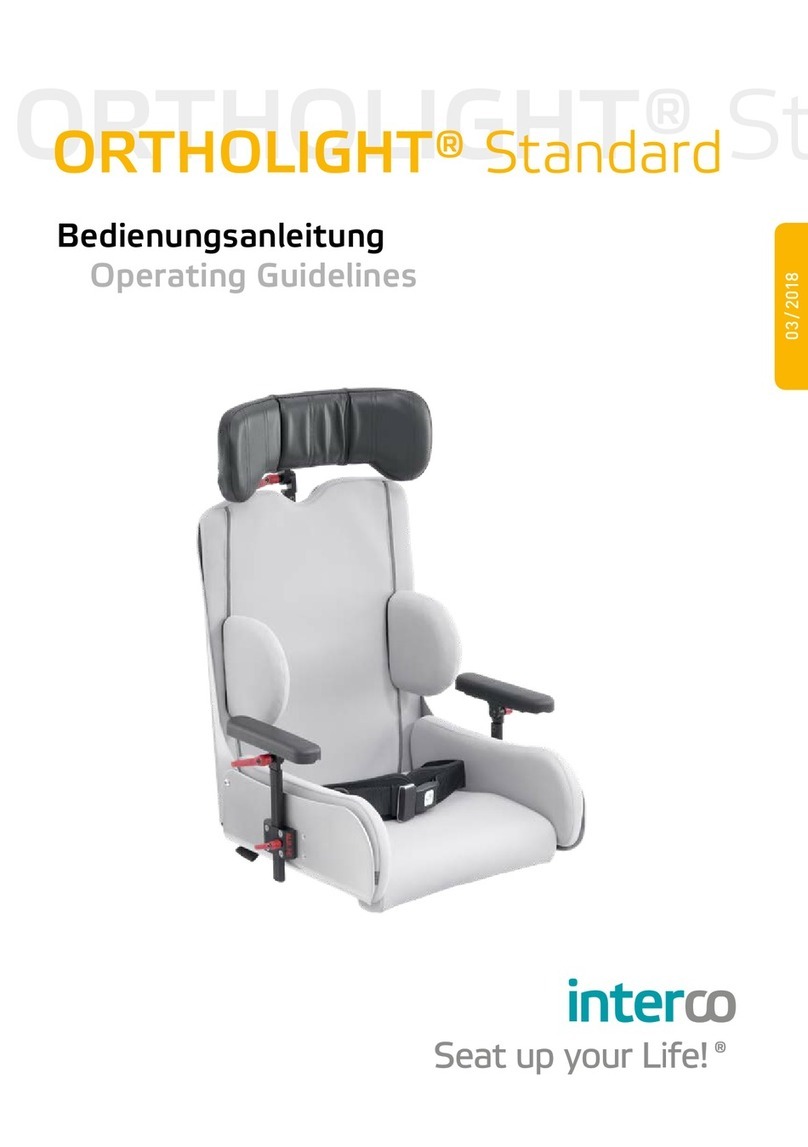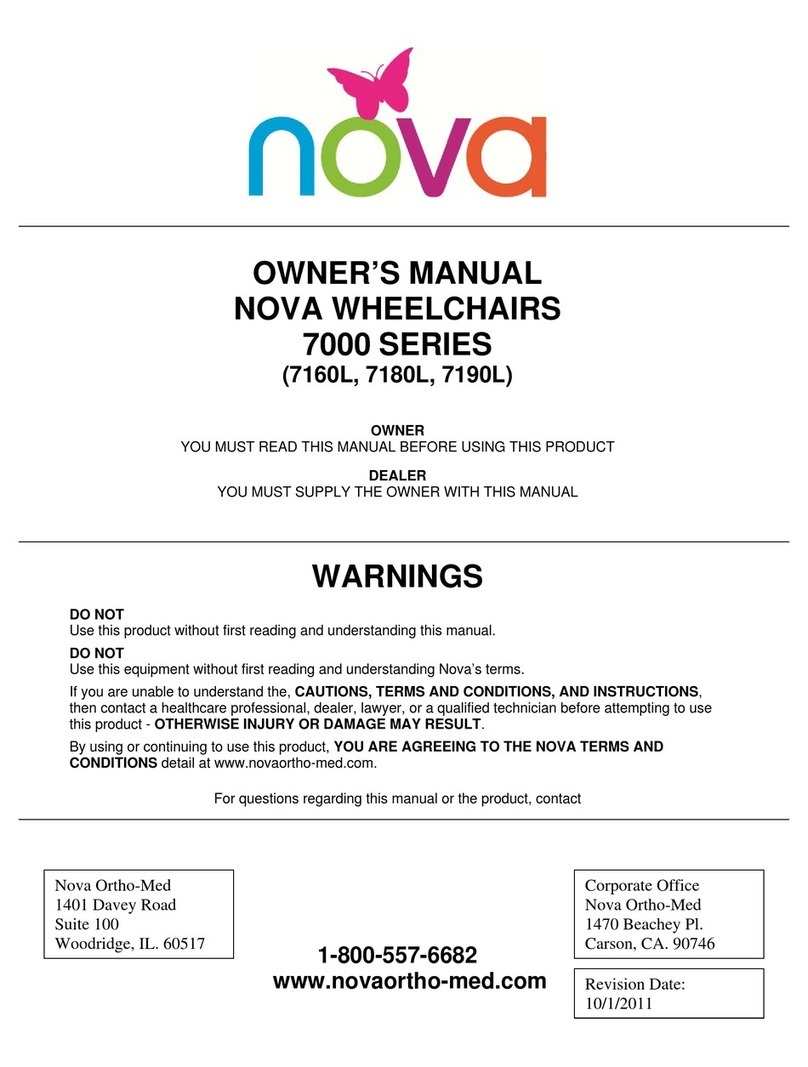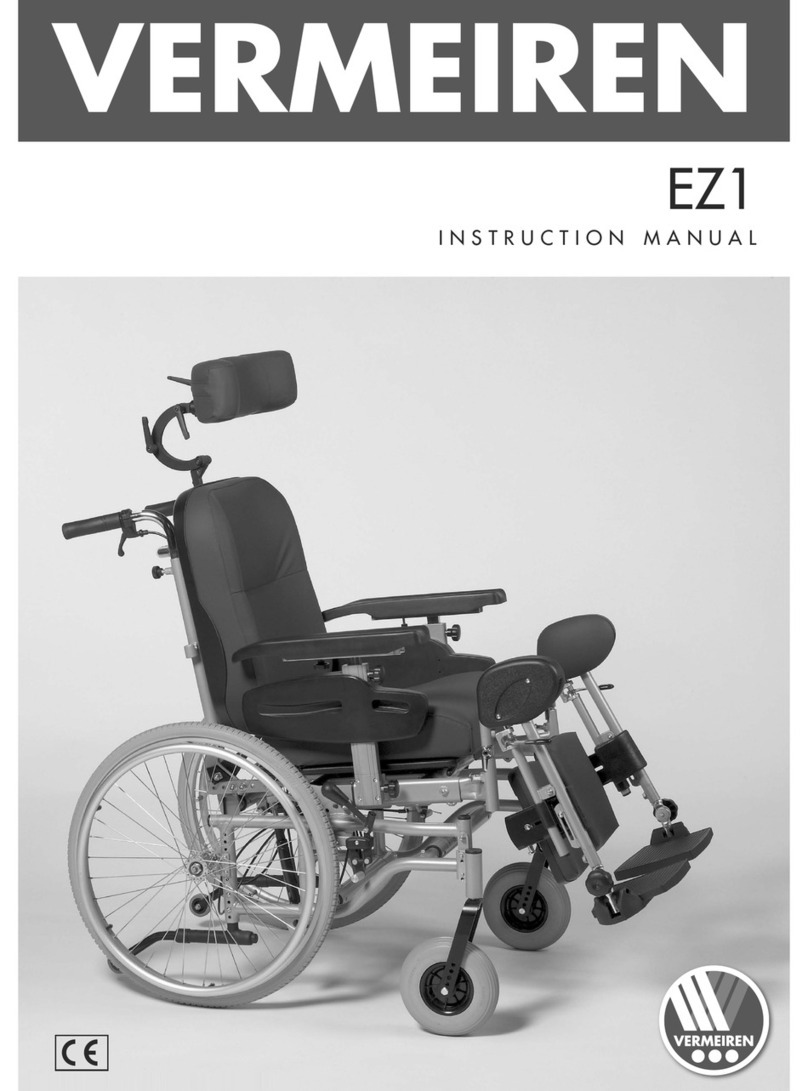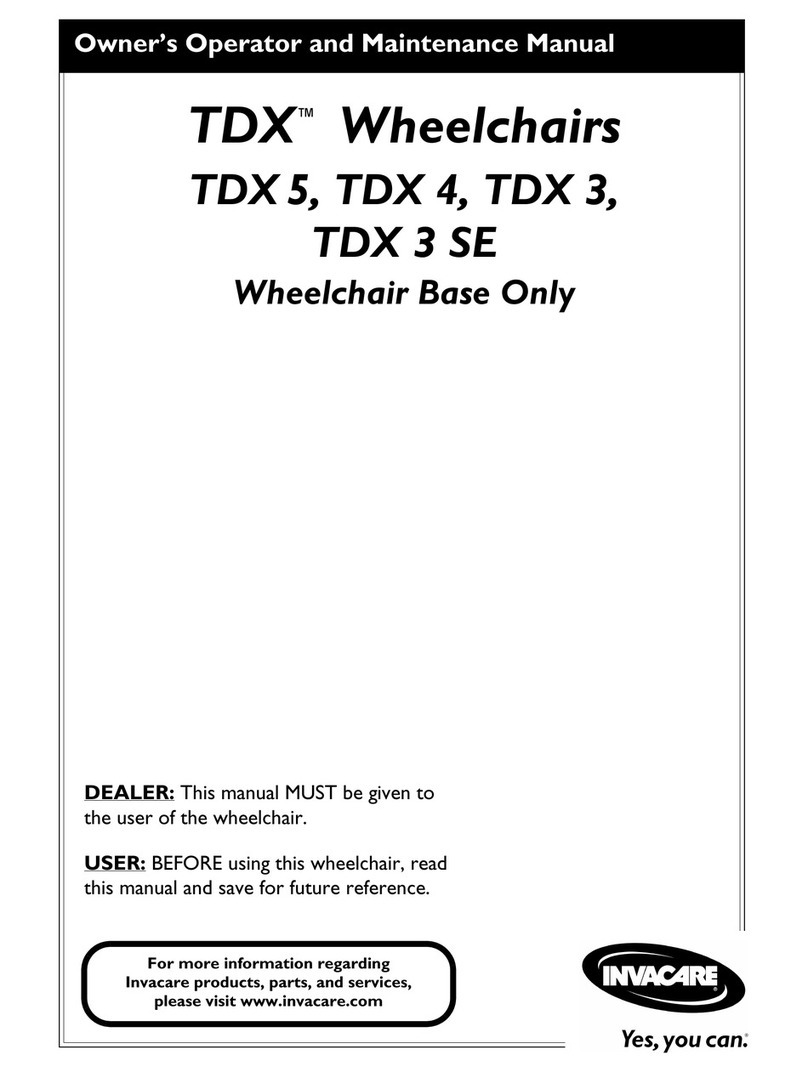6
1.5 Specification Jump beta
Jump beta is a lightweight, versatile activity wheelchair
for indoor and outdoor use (flat, school, workplace, lei-
sure time, travels). It is equipped with two different
frame versions with two different leg supports each:
• firmly integrated with the frame (sports-frame)
• or pivoting and removable (PLS-frame).
Both frames are available with straight or abducted (6
cm) leg supports and two frame heights:
• standard height and
• XL-height (+4 cm)
for very tall people with particularly long lower legs.
Jump beta is suitable for adolescents and adults from
a seat width of 28 cm and up to a maximum payload
of 120 kg. 3 frame sizes are available depending on
the seat depth chosen:
• frame size 4 (for wheel sizes 22“/24“)
• frame size 5 (for wheel sizes 24“/26“)
• frame size XL (for wheel size 26“)
Thanks to its double cross-brace, Jump provides
freedom of twisting and driving comfort comparable
to that of a wheelchair with a rigid frame. In order to
support long-term and sustainable therapy concepts,
all equipment components are compatible with any
frame version and may be converted or upgraded at
any time. The wheelchair is perfectly adjustable to the
user’s physiognomic needs.
Jump’s seat/back area provides manifold options,
enabling a highly differentiated positioning of the us-
er:
• seat and back covers/belts,
• firm seat plate and firm moulded back,
• anatomic seat/back unit,
• suitable for all kinds of seat shells (type 1-3)
Casters are available in various versions in sizes from
4’’ to 7’’.
The side-parts are available in various versions as
well: from welted aluminium (height-adjustable) to re-
tractable and pivoting versions, with or without arm
rest (also height-adjustable).
Foot rest(s) are available in both versions (on the in-
side or outside): divided or persistent. They all fold up-
wards, and in the case of the sports-frame versions
they are pivoting as well. For the PLS-frame, an up-
ward-folding leg rest with physiological pivotal point
and leg support is available.
Furthermore, Jump beta offers a wide range of equip-
ment options (cf. order sheet).
1.6 Usage
The wheelchair serves the sole purpose of active or
passive transportation of the person to whom it has
beenadjustedbyaqualiedspecialisedtrade.Itmay
be used without restrictions indoors, and on rm
ground outdoors. If the wheelchair is to be used on
uneven grounds, such as sand, gravel, cobblestone,
etc., a suitable upgrade (e.g. outdoors power steering
device) is necessary.
ATTENTION The wheelchair must not be used in ex-
tremely wet areas (shower, sauna, etc.), and it should
not be exposed to wetness in any excessive fashion.
ATTENTION The wheelchair must not be used as
means of transportation of goods, objects, and the
like.
INFORMATION
Regular tending and maintenance (cf. maintenance
plan in chapter 6) extend the wheelchair’s service life
and is strictly mandatory.
1.7 Reception
�PLEASE NOTE
DELIVERY
All our wheelchairs are built entirely in our factory
where they are also tested for functional efciency
and freedom from defects. Then they are packed into
special cartons by trained members of our dispatch
section.
FORWARDING
For reasons of liability, we must ask you to check the
wheelchair for possible damage caused by transporta-
tion immediately upon reception and in the presence
of the bearer (forwarding company).
DAMAGE IN TRANSIT
In the event of damage, please proceed in the follow-
ing fashion:
• write a brief damage- or factual report and, if
possible, include informative photos.
• collect personal data from the bearer (drivers
licence etc.),
• inform us immediately.
�PLEASE NOTE
Do not sign the bearer’s receipt until you have thor-
oughly assessed the wheelchair’s freedom from dam-
age.
�PLEASE NOTE
Belatedly reported damage cannot, according to ap-
plicable law, be asserted - neither to us nor to the for-
warding company.
